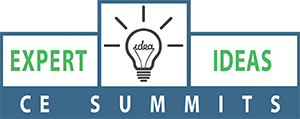Retirement Planning: Avoiding OAS Clawbacks

Are retired Canadians turning to you for help when they’ve been subjected to Old Age Security clawbacks? If you are a professional in the tax and financial services industry, its your job to provide valuable advice to pre-retirees on this complex issue, and help them avoid the Pension Recovery Tax that could take a chunk out of their retirement income.
If you are a bit rusty on strategies that will help reduce the tax, be sure to take in two events this May: Knowledge Bureau’s Spring CE Summit workshop and Evelyn Jacks’ keynote at IFB’s Winnipeg Event. The events can assist as you prepare to tackle these issues and establish other essential post-budget action strategies that maximize your clients’ wealth in retirement and during other life stages.
What triggers a clawback? If, in any year, an individual’s net income exceeds the threshold amount ($74,788 in 2017, $75,910 this year) while receiving OAS, they will have to repay the lesser of:

-
15% of their net income over the threshold and
-
The total OAS they received in the year.
Then, there is a two-part hit your clients may not be ready for: once the clawback arises, the recovery tax needs to be added to taxes payable for the year. Thankfully, there is a deduction on the return for the amount to be repaid.
“Starting the following July, OAS cheques are automatically reduced by one-twelfth of the clawback amount, which is withheld as pre-payment of the OAS recovery tax for the following year. This reduction in monthly OAS payments will continue until the following June and the amount will be re-calculated that July based on the prior year’s tax return,” says Walter Harder, DFA-Tax Services Specialist and Master Instructor with Knowledge Bureau.
There are two basic strategies you can use to avoid the clawback:
-
Delay receipt of OAS so it's not clawed back, or
-
Reduce net income to below the threshold amount. To do this, plan to diversity income sources that contribute to an increased net income - dividends for example. Or, be sure you are optimizing pension splitting opportunities. Further, if there are undeducted RRSP contributions, use them to reduce net income.
These and other strategies will be discussed in a peer-to-peer education session May 29 in Winnipeg, May 30 in Calgary, May 31 in Vancouver and June 6 in Toronto. Known as the CE Summits, tax and financial advisors are provided with the opportunity to enjoy networking and collaborating to get the best results for their clients, three times during the year at these workshops.
Once you’ve educated your clients on OAS clawbacks, and worked with them proactively to provide them with tax-efficient retirement income, it’s time to expand your circle of knowledge and become better informed about the tax implications of Canada’s Federal Budget 2018 and recent U.S. tax reforms, which impact Canadians with U.S. citizenship, children studying in the U.S., or those with U.S. investments or real property.
Start by:
-
Signing up for the Spring CE Summit workshop that will be visiting four Canadian cities, and focusing on post-budget action strategies. The early bird registration deadline is May 15; register today for the best available rates.
-
Registering for the Winnipeg Regional Event hosted by IFB, where Knowledge Bureau’s Evelyn Jacks will be a keynote speaker.
-
Enrolling in the certificate course Tax Efficient Retirement Income Planning .
COPYRIGHT OWNED BY KNOWLEDGE BUREAU INC. 2018.
UNAUTHORIZED REPRODUCTION, IN WHOLE OR IN PART, IS PROHIBITED.
 |
 |
 |
 |
|
Refer a Friend |
Research |
Calculators |
Course Trials |
 |
 |
 |
 |